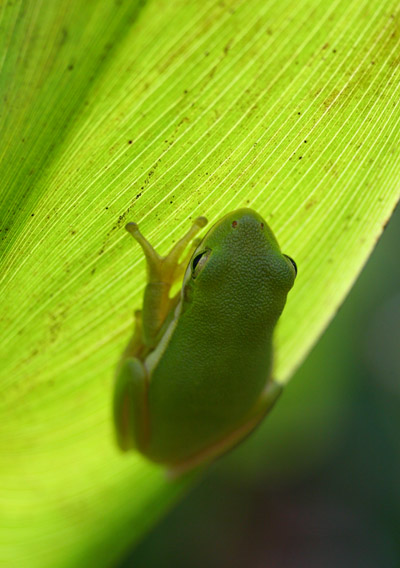 There are a few people, it seems, who imagine wildlife photography to be kind of a rough-and-tumble business involving forbidding locales and exposure to challenging and sometimes dangerous encounters with fauna. To those people I only want to say, “You’re absolutely right!” While out capturing the images within this post, I was better than ankle-deep in some muck that could have sucked my sandals clean off, had I not been careful, and there was even a chance of being stung by a bee, perhaps more than once. And there was no one within, oh, about two hundred meters or so. The walk back to the car alone, at the edge of a shopping center parking lot, was a good thirty meters through poorly-cut weeds. Uphill.
There are a few people, it seems, who imagine wildlife photography to be kind of a rough-and-tumble business involving forbidding locales and exposure to challenging and sometimes dangerous encounters with fauna. To those people I only want to say, “You’re absolutely right!” While out capturing the images within this post, I was better than ankle-deep in some muck that could have sucked my sandals clean off, had I not been careful, and there was even a chance of being stung by a bee, perhaps more than once. And there was no one within, oh, about two hundred meters or so. The walk back to the car alone, at the edge of a shopping center parking lot, was a good thirty meters through poorly-cut weeds. Uphill.
Anyway, this was a brief side trip, actually back in September, a few days before this post featuring images from the same excursion (it sounds so much better using the big words than when I say I just stopped at the pond on my way past to see what was happening.) But for a casual check on conditions, I shot over 160 frames in 35 minutes and I couldn’t begin to tell you how many individuals I saw; more than I initially thought at least, since the second image in the previous post came from the same day. Safe to say it was busy down there.
When I say, “casual,” it means I didn’t bother with the versatile macro flash rig and was primarily shooting in existing light, which reduced the number of options and keepers from the session, largely because the breeze was quite stiff and pickerelweed stems are fairly tall; movement was a constant issue, and to keep the shutter speed up I was shooting at larger apertures most often, which kept the depth of field pretty limited at these magnifications. And this is more magnified than it might seem, because all of the green treefrogs (Hyla cinerea) that I breathtakingly encountered were juveniles, this year’s brood, and so about half the body length of adults; this means an average of about 25mm. You can easily see the net effect here, with the eyes and foretoes sharp while the hind end of the body has already gone well out of focus.
Treefrogs need to stay moist, so they don’t like direct sunlight or hot days, which meant that most of the ones I saw were staying to the shady side of the leaves at least, but more often even well down into the thicket of stems, reducing the available light even more. Still, the color tends to be richer in the natural light images; you can compare natural light and flash with the photos in this post, from the same location. And while the selective focus has to be pinned down on the eyes most often – we’re put-off by not seeing the eyes sharp in a photo – it does lend a somewhat surreal look to the rest of the image.
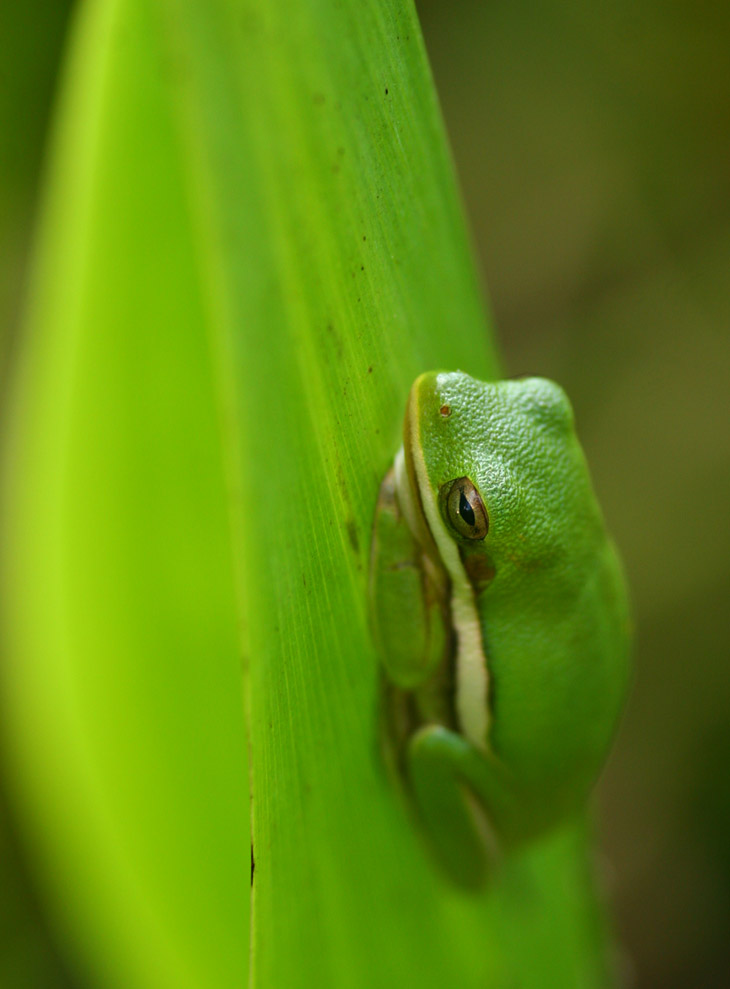
Treefrogs are primarily nocturnal, so they spend most of the day snoozing in safe locations. It was midday and many of my subjects, while aware of my presence, allowed me a close approach as long as I did so slowly, but perhaps half just didn’t want me around and jumped away to more distant leaves. Thus the variety of the images that I snagged was limited, and pretty typical of the daytime poses. On a couple of occasions, though, I caught something a little more interesting, like two of them sharing the same leaf side-by-side.
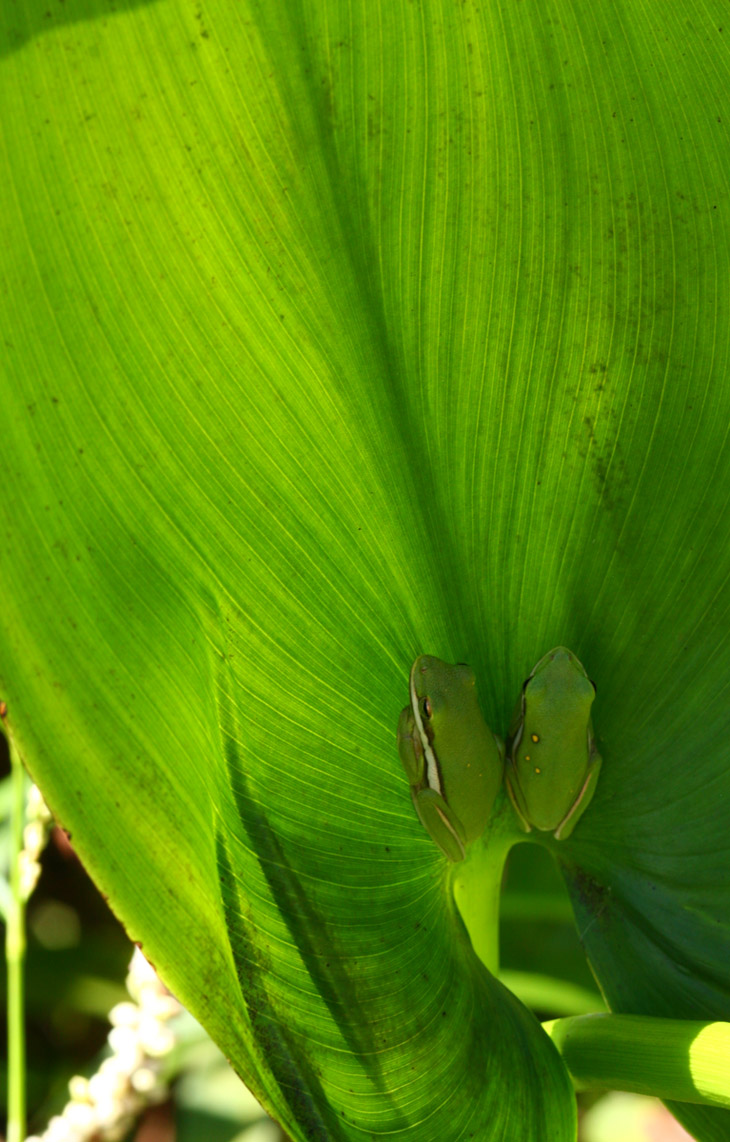
Mated pair? Siblings? The latter is somewhat likely, given the large number of eggs that got deposited in the pond and the same general age of the individuals, but since these are under breeding age the chance of them being romantically entwined is virtually nil. Frogs also don’t have the social structures that we have and no particular reason to hang out together (“You like mayflies? I like mayflies!”) so I’m more inclined to put this down to just happening to settle on the same leaf when it came time to catch a few winks. It’s rare enough to see that I had to go in closer and do a portraity shot (spellcheck doesn’t like that word.)
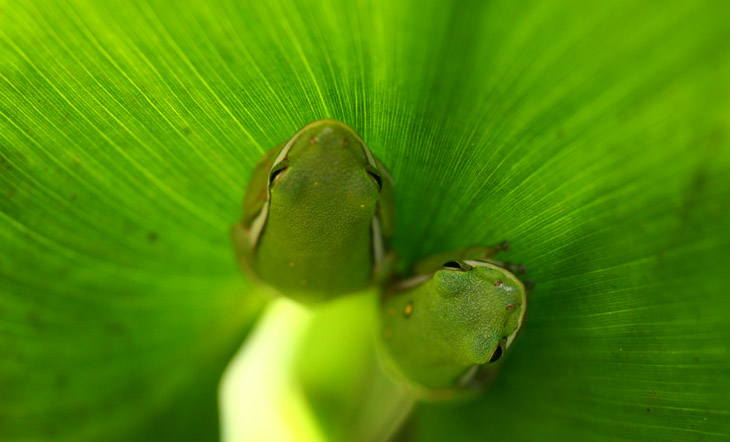
Remember what I said about keeping the eyes sharp, and about short depth of field? Yeah, imagine trying to get the camera lined up just right, with the image plane (essentially the back of the camera) equidistant from the eyes of both of these spuds, while the wind was blowing, and without disturbing them. Standing in muck and awkwardly aiming down from above the leaf, without touching it or any neighboring leaves which would set up warning vibrations. I’ve said it before: macro work can occasionally make you ache in muscles you never realized you had. You might have heard the saying that good artists suffer for their art, but at the very least, even mediocre ones make you suffer through listening to them pursuing it…
Later that same evening, as they also say (probably not the same ‘they,’ but anyway,) I found another of the same species in the even more exotic and intrepid locale of the backyard fence, even if this one is notably darker than the others. Since we don’t see too many green treefrogs in the immediate vicinity I’ve been pleased to spot several this year, and this one posed much more dynamically for me, possibly because it was dazzled by the headlamp and really couldn’t tell what I was doing.
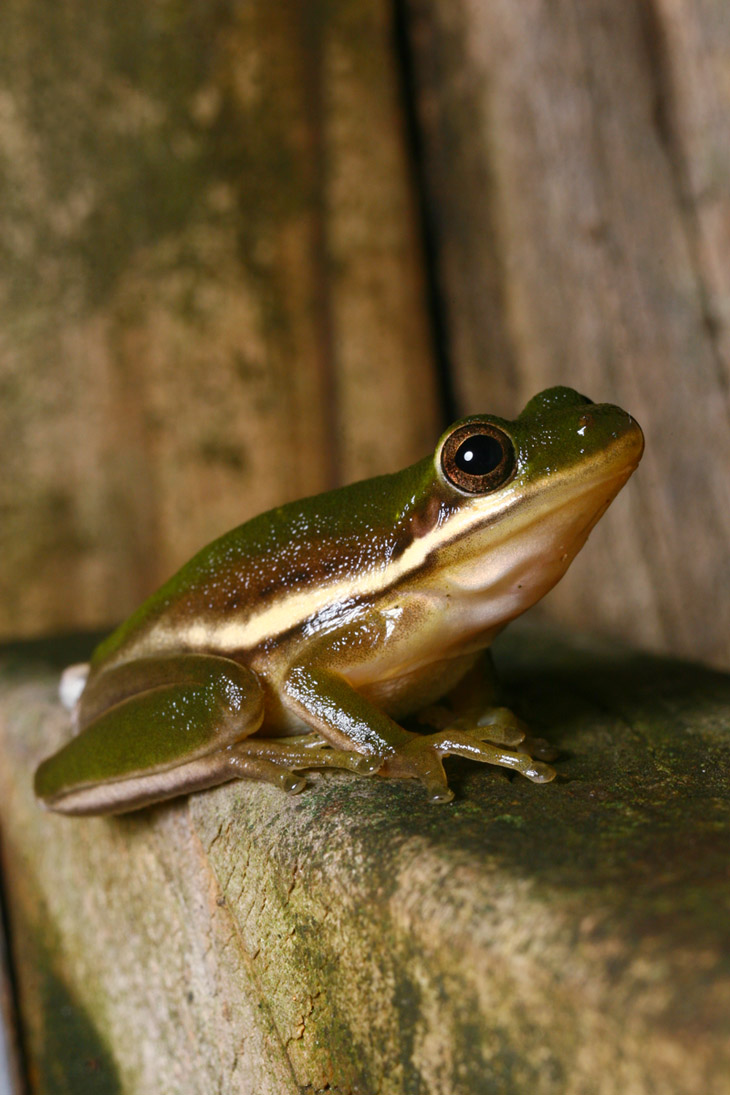
At nearly 11 PM the flash was a necessity, and I could use f16 and get a better focus range, while the conditions let me get in even closer for the best portrait of the bunch. Or at least I think so, though others may have a different opinion. They’d be wrong, but that’s still allowable…




















































